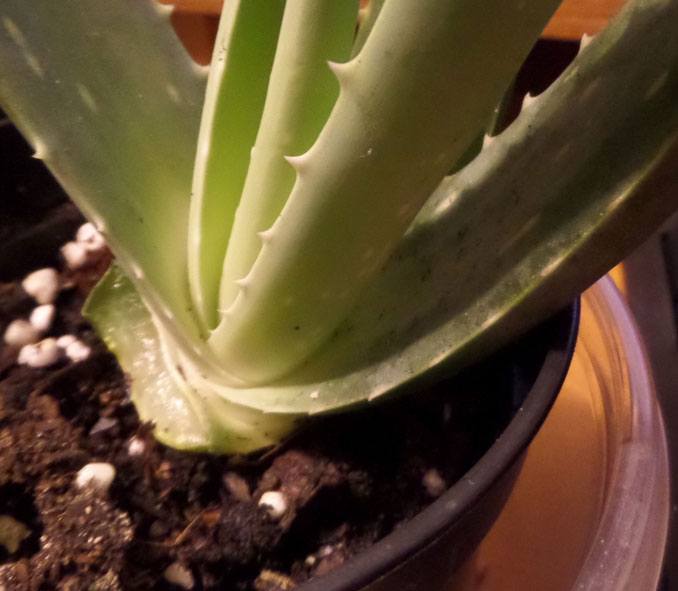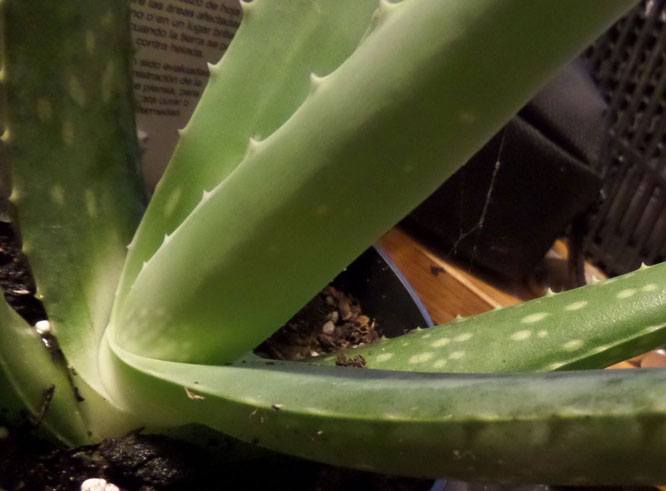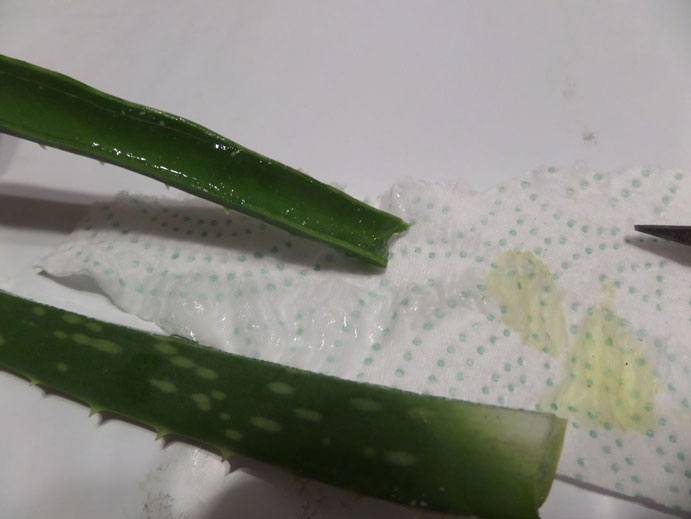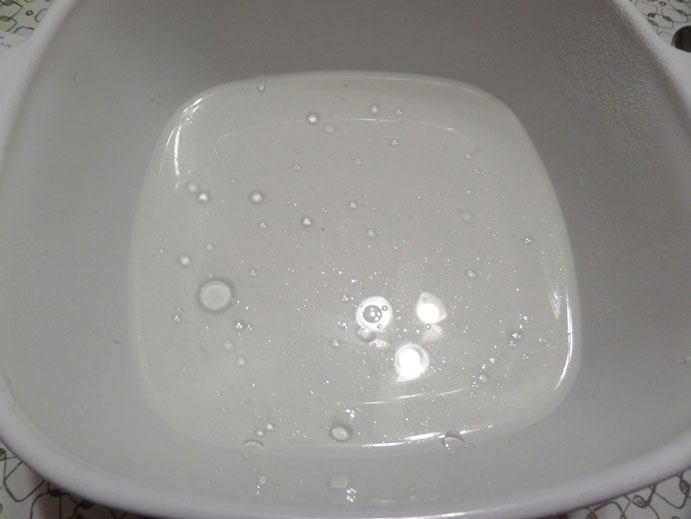THE ALOE SHAMPOO RECIPE AND YOUR CHANGING NEEDS
When you start using your own DIY shampoo, you may notice that your hair will suddenly become more oily. This is happening because your scalp has been making a lot of extra oil (sebum) to compensate for all the oils you have been removing with the shampoo. Once the sebum production slows down, you will need to adjust the shampoo recipe to meet your hair’s changing needs. In this case, you might only use baking soda or Castile soap once a week, or even less if your hair is relatively clean and does not have large amounts of oil buildup.
PREPARING ALOE PLANTS TO HARVEST GEL
- Start off by having at least 5 or 6 aloe plants on hand.
- Choose one plant two or three days before you are going to harvest and give it some extra water. Instead of removing the excess drainage immediately, let it sit for a few hours so that the soil will absorb more water and remain damp longer.
- Watch the leaves carefully. You should see them swell up with excess water. If they become soft, mushy, or split open, then you have added too much water. It is best to work with another plant at this point because Aloe rots very quickly.
 (These leaves have some gel in them, but I would not harvest them unless absolutely necessary.)
(These leaves have some gel in them, but I would not harvest them unless absolutely necessary.)
- For this recipe, you will only need one medium-sized leaf, as long as it is nice and full. After you harvest the leaf, give the plant a bit of extra water if the soil is dry.
 (The lower leaf in this photo is full of gel – you can tell because it is plump over the halfway mark.)
(The lower leaf in this photo is full of gel – you can tell because it is plump over the halfway mark.)
HARVESTING ALOE GEL FOR SHAMPOO
- Cut the leaf lengthways in half so that you can see the gel layer of the leaf.
- Use a paper towel to let the juice drain. You should be able to clearly see when the fluid changes from the yellow juice to clear gel.

- Next, take half the leaf and squeeze the skin so that the clear liquid falls into a cup or bowl. Some of the gel will be stickier and thicker than other parts. Let both fall into the bowl.
- Repeat with the other half of the skin.
- While it is beyond the scope of this article, additional steps may need to be taken if you are going to ingest Aloe Vera. The gel is safe to apply to skin and hair, however, some molecules in it may cause cancer if swallowed.
THE BASIC ALOE SHAMPOO RECIPE
Ingredients:
- 1 cup of water
- 1 tablespoon of Aloe gel
- 1 tablespoon of Baking Soda
- 3 Vitamin E oil capsules
Basic Instructions:
- while you are preparing the Aloe gel, boil some water.
- Add the baking soda to the water. Make sure it dissolves completely. Alternatively, if you are using liquid Castile soap (3 – 5 tablespoons), add that at this time instead.
- Next, stir in the Aloe gel.
- Finally, cut open the Vitamin E oil capsules and add them to the mix.
The resulting shampoo will not look all that different from regular water. If you dip your fingers in it and rub them together, you will notice that the liquid is just a bit more slippery. While rinsing your hair, it should feel less greasy. You will know the shampoo is out when you don’t feel the slipperiness of the Aloe.
When using this recipe, do not forget to follow up with a DIY conditioner made of:
- 1 tablespoon of Apple Cider Vinegar (with the mother) to
- 1 cup of water.
You will need the vinegar rinse to adjust the pH of your hair and also help soften it and seal it off. Once you stop using baking soda or Castile soap in the recipe, you will not need to follow up with the Apple Cider Vinegar conditioner. In fact, if you use this conditioner without applying a higher pH solution first, it can make your hair too acidic.
If you want a particular fragrance, go ahead and add a few drops of essential oil. Try to choose an oil that will either match the needs of your scalp and hair or will compliment other herbs in the blend.
Adding dried herbs to the basic recipe can also help with managing dry hair, oily hair, and dandruff. When adding the dried herbs, do not forget to steep them in hot water first, and then drain off the liquid to use in the shampoo. I usually find that 1 ounce of dried herb works well when steeped in one cup of water. Just remember not to add two cups of water to the shampoo!
Here are some herbs you can add to the recipe based on your specific needs:
- For dry hair, add rosemary or calendula. You can also try substituting 3 – 5 tablespoons of liquid Castile soap for the baking soda. The soap will still strip your hair of oil, but not as much as the baking soda. An additional ½ teaspoon of Jojoba oil may also be of some help.
- For oily hair, add lavender, mint, or lemon balm.
- For dandruff, add thyme or rosemary.
- If the Castile Soap is still removing too much oil, add a 1 to 3 teaspoons of lemon juice as needed.
Although I have grown accustomed to spraying this solution into my hair, you may want to decrease the amount of water so that you have a more concentrated solution. If you want something that looks and feels more like shampoo, just reduce the water to 3 – 5 tablespoons.
I do not recommend adding preservatives as they will change the way the shampoo works.
Source: Survivor Fortress


Laura Price Harrison
Lily Dombrowski
Ken Myrow